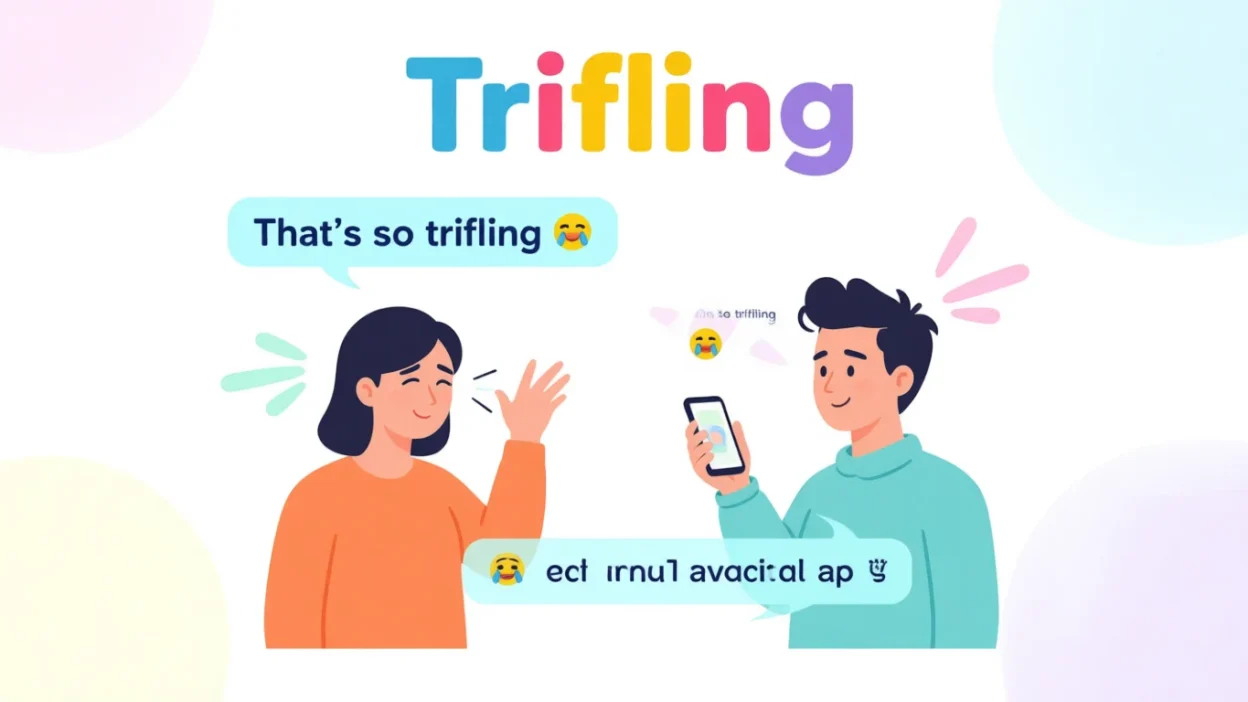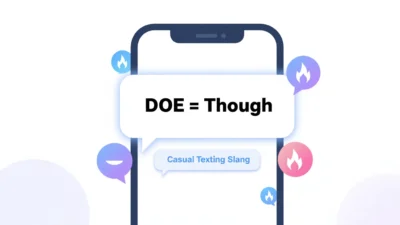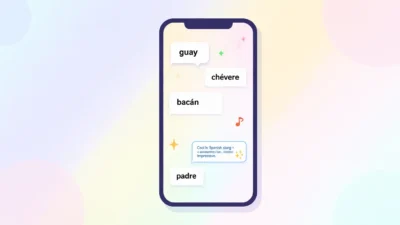Have you ever been scrolling through TikTok, Instagram, or your group chat and suddenly saw someone call another person trifling, and thought, “Wait… what does that even mean?”
It’s one of those slang words that can confuse anyone who isn’t familiar with its context. Maybe a friend used it in a text, or you saw it in a TikTok caption—and it made you pause.
By the end of this article, you’ll know exactly what trifling means, how to use it naturally in conversation, and how to recognize it in social media and texting.
Quick Answer:
Trifling is a slang term used to describe someone who is petty, annoying, unreliable, or acting shady.
It’s casual, sometimes playful or sassy, and perfect for social media or text conversations—but not for formal situations.
What Does Trifling Mean in Text?
Definition: While “trifling” doesn’t have a formal acronym, in slang it generally means petty, insignificant, or deceitful behavior.
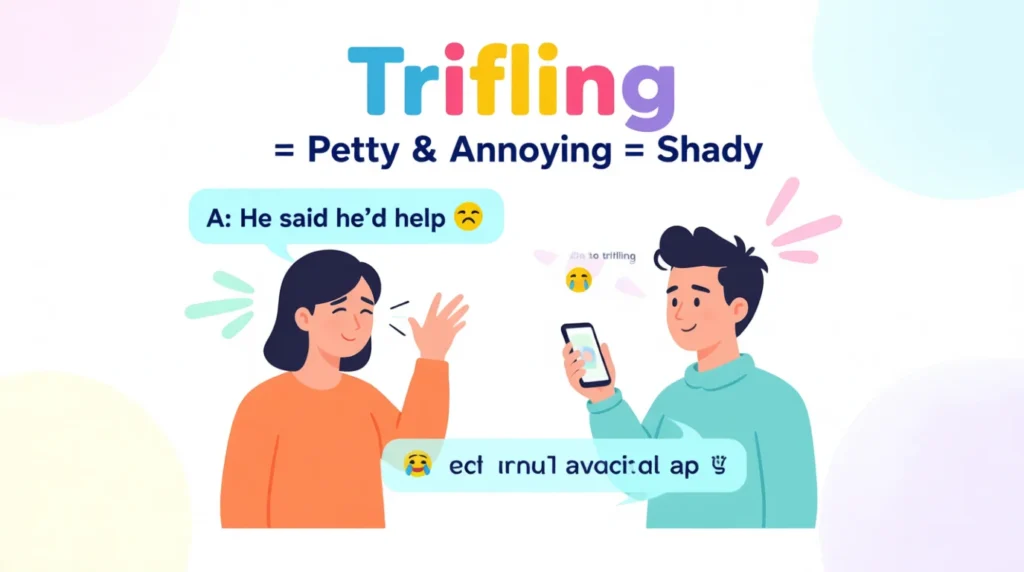
- In conversation: It’s used to call out someone for being immature, shady, or simply not worth your energy.
- Example:
- A: “He promised to help, but then just left me hanging 😑”
- B: “Wow… that’s so trifling.”
In short:
Trifling = petty/unreliable/shady behavior = someone being immature or not sincere.
Where Is “Trifling” Commonly Used?
Trifling slang is popular in informal, social contexts, particularly online:
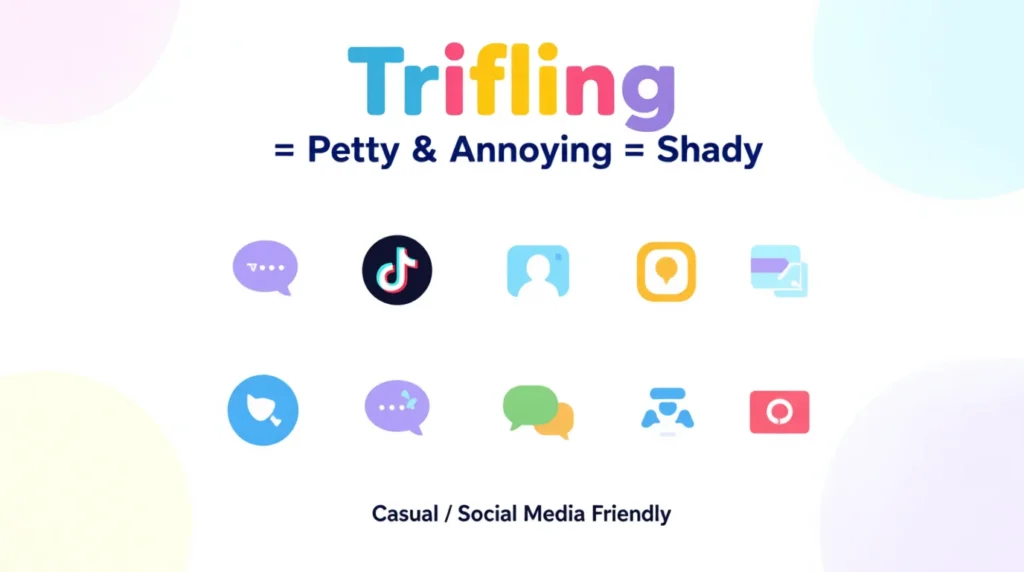
- 📱 Text messages — calling out friends’ annoying behavior
- 📸 TikTok / Instagram captions — describing petty or fake actions
- 🗨️ Group chats — venting or gossiping
- 🎮 Gaming chats — when someone behaves unfairly or deceitfully
Tone: Casual, playful, or sassy. Not suitable for work emails or formal communication.
Examples of Trifling in Conversation
Here are real chat examples showing trifling in text:

- A: “He was flirting last week, now he’s ghosting me 😤”
- B: “Ugh, that’s trifling.”
- A: “She borrowed money again and didn’t pay back.”
- B: “Classic trifling behavior.”
- A: “He canceled our plans last minute again.”
- B: “Big trifling energy.”
- A: “She said she’s busy but was posting stories online.”
- B: “That’s so trifling lol.”
- A: “He bought me dinner once, now he says he can’t afford it.”
- B: “Totally trifling.”
When to Use and When Not to Use “Trifling”
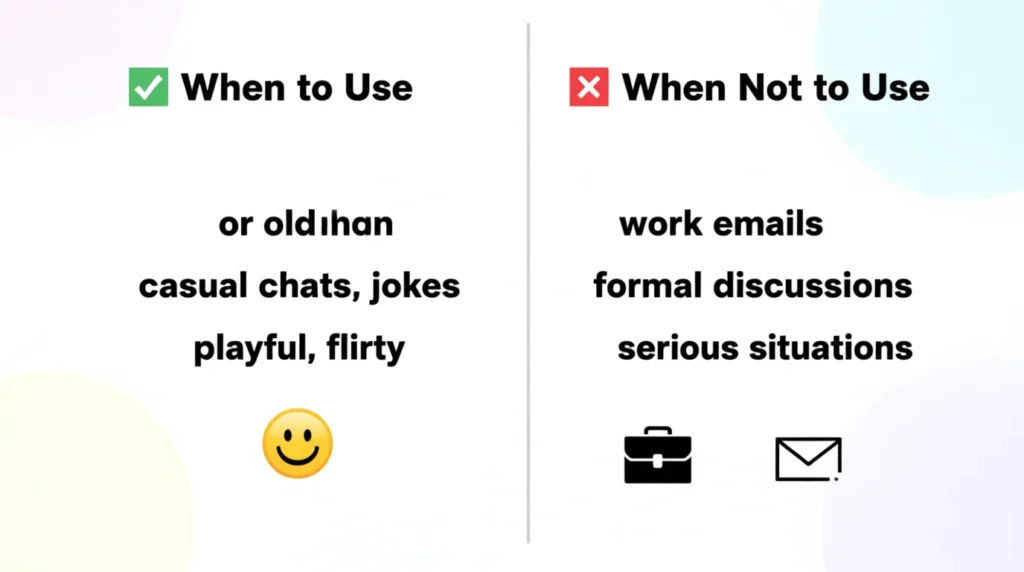
✅ When to Use
- Casual or friendly conversations
- Jokingly calling out petty or annoying behavior
- Social media captions or TikToks
- Flirty or playful banter
❌ When Not to Use
- Professional or work emails
- Serious or formal discussions
- Situations requiring clarity over tone
Comparison Table:
| Context | Example Phrase | Why It Works |
|---|---|---|
| Friend Chat | “Stop being trifling 😏” | Casual, fun, and direct |
| Work Chat | “Let me know when you’re free.” | Polite & professional |
| Email / Report | “Please review the attached doc.” | Formal & clear |
Similar Slang Words or Alternatives
| Slang | Meaning | When to Use |
|---|---|---|
| Petty | Focused on trivial issues | Friend chat, social media |
| Shady | Suspicious or untrustworthy | Casual, online discussions |
| Sketchy | Questionable or unreliable | Texting or gaming chats |
| Messy | Chaotic or dramatic | Social media, gossip |
| Sneaky | Secretive or deceptive | Friends, joking contexts |
FAQs About Trifling
Q1: Is trifling rude?
A: It can be, depending on tone. Usually playful or sassy rather than harsh.
Q2: Can trifling be flirty?
A: Yes! People often use it teasingly in flirty banter.
Q3: Can I use trifling at work?
A: No. It’s informal slang and may be misunderstood in professional settings.
Q4: What’s the difference between trifling and shady?
A: Trifling is more about being petty or immature, while shady implies deceit or suspicion.
Q5: Can trifling describe objects or only people?
A: Mostly people, but jokingly you can describe events or plans that are disappointing.

